How to Clean a Remington 870 and Other Shotguns
Cleaning and care
A weapon, like any other complex mechanism, needs maintenance. If you look after a gun regularly, properly clean it and lubricate it, it will reliably serve you for a long time. If you forget to clean it, sooner or later, its mechanism and barrel will rust and become unusable. As for malfunctions and problems during shooting, in the case of non-regular cleaning and care, they should be expected much earlier.
WARNING: WARNING: Always check and unload your firearm before cleaning. It is very important! Suppose you do not check the weapon and start disassembling with the remaining shotshells in it, this can easily lead to an accidental shot – which can cause damage to the firearm and injury or even death to its owner. Unload chamber and magazine tube before cleaning!
To clean your Remington 870 shotgun, you will need:
– a cleaning rod
– nylon bore brush
– brass or steel bore brush
– shotgun cleaning solvent/oil
– paper napkins/towels or cloth
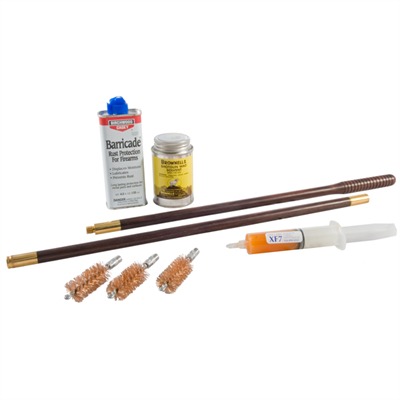
Shotgun Range Day Cleaning Kit
Quite often, ready-made kits are sold, which include a cleaning rod and a set of bore brushes. Usually, in addition to brass, a set of brushes also includes nylon, as well as a cotton swab.
Related Post: Best Shotgun Kit and Oil for Cleaning and Lubrication
Oils, Lubricants, Solvents, Chemicals
There are several types of cleaning products – specialized, having a specific aspect of application, and universal, which are suitable for almost everything. For example, the popular Ballistol is ideal for dissolving gunpowder residue, cleaning, and lubricating. No less versatile is Break-Free CLP; in fact, the abbreviation CLP means Cleaner-Lubricant-Preservative. In some gun care instructions, this abbreviation is used instead of the phrase “universal gun oil”. Universal means it doesn’t not need to be removed after use.
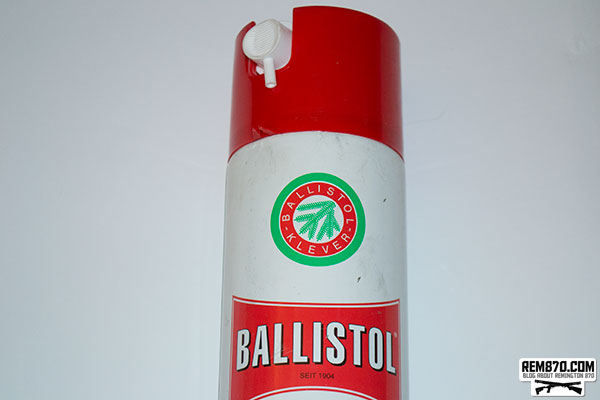
Ballistol Oil Spray
Specialized cleaners such as Shooter’s Choice Shotgun and Choke Tube Cleaner or BoreTech C4 Carbon Remover are designed to dissolve gunshot residue only, they are not suitable for lubrication. Moreover, due to their aggressive action, after use, they must be removed with either a universal oil or a special cleaner-degreaser like Shooter’s Choice Quick-Scrub or similar (after the degreaser, reapply lubricating oil where necessary).
A cleaner degreaser is a special product usually available in the form of an aerosol. A jet of cleaner is capable of blowing out the remnants of dirt or aggressive chemicals from the corners of the weapon, where it cannot be reached otherwise. An aerosol cleaner is indispensable if you need to clean a complex assembly – for example, a trigger mechanism – from dust, dirt or thickened grease, without first dismantling and disassembling it.
Preservative lubricant is applied to the weapon before its long-term storage without operation. It is not suitable for lubrication during regular use.
What Gun Oil or Lubricant to Choose?
Almost any oil specifically designed for lubricating weapons will work for you. Some shooters even use regular engine oil. I am not a fan of such a replacement – it is easier to buy an oil that comes in a container designed for convenient use, it is not very expensive, and is spent very economically even with constant use.
Why is the cost different? I will not talk about very expensive oils with a supposedly unique formula – I think this is nothing more than an advertisement. Considering the medium price range oils, we pay a little more for some additional features. For example, BoreTech’s weapons chemicals are a little more expensive – but their products do not have such a sharp and unpleasant odor as some other solvents, so they can be used comfortably at home.
I’ve been using the inexpensive Gunex, Breakfree CLP and another all-purpose oil for quite some time now. They are suitable for both cleaning and lubrication. They work equally well on any weapon, lubricate, make the mechanisms work smoothly, and protect against rust. I can recommend them for any purpose.
What to look for in the cold season
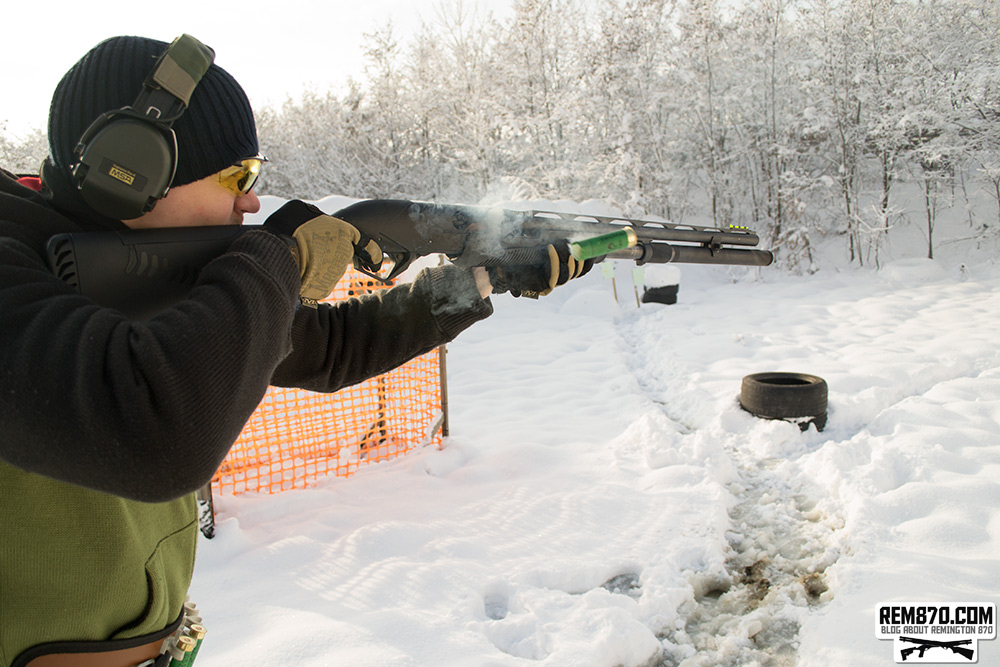
Winter Shotgun Training
Please note that synthetic oils perform much better than mineral oils at low temperatures. One of the best mineral gun oils, Ballistol, was developed for the needs of the German army during the First World War. It is noteworthy that one of the requirements for this oil was the maximum versatility of use – in addition to cleaning and lubricating small arms, Ballistol had to be used as a care product for leather elements of military equipment, as well as a wound-healing agent. My personal experience confirms that Ballistol, in the absence of a first aid kit, is great for treating abrasions. However, this oil thickens in cold weather, which can cause delays on semi-automatic weapons.
Grease
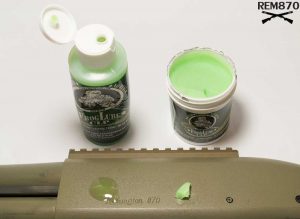
Froglube CLP Liquid and Paste
The use of thick pastes – namely, Froglube lubricant, which is advertised as natural – for some reason was unsuccessful on all semi-automatic weapons where I used it. After applying this lubricant, delays immediately began. Therefore, I recommend using traditional liquid gun oils.
First cleaning
Once you have purchased your gun, be sure to take it apart and inspect it. Check that there is no preservation grease on the internal surfaces and parts. Such a lubricant is usually quite thick and sticky; applied it in a thick layer.
In the case where no preservative lubricant is available, simply wipe all parts with a cloth soaked in neutral oil.
If preservation grease is present, you need to wipe it off with a dry cloth and then rub the cleaned surfaces with neutral oil. Carefully inspect all parts, especially moving ones. Remaining preservation grease may interfere with the normal operation of the mechanisms.
The barrel is usually quite simple to inspect, wipe it with a cotton swab with oil. Make sure that there are no thick streaks of oil and parts from swabs in the bore.
Long-Term Storage
Preservation before long-term storage
If you know that you are leaving the weapon for long-term storage – for months or longer, it is recommended to conserve the weapon. A thick preservation oil is suitable for this purpose. The weapon is lubricated inside and out.
Cleaning after shooting
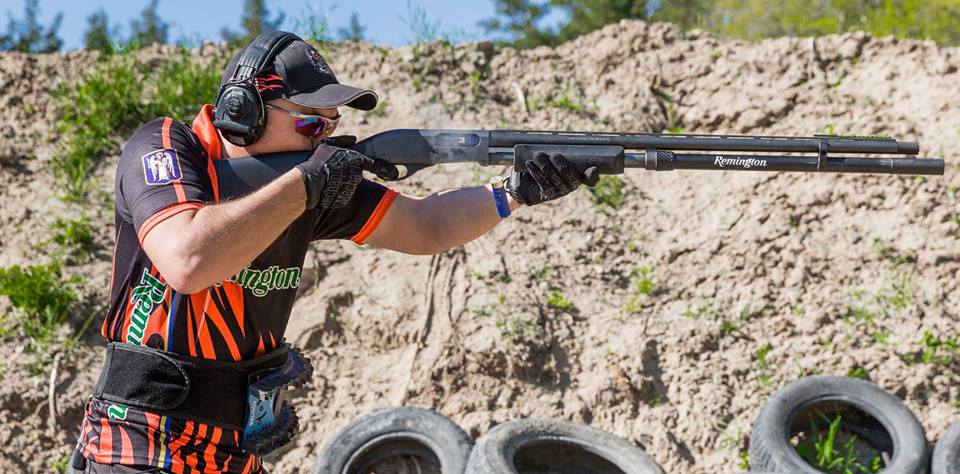
Remington 870 for Practical Shooting (3-Gun, IPSC)
When firing, gun powder residue is left in the barrel. Additionally, traces of lead and plastic may remain on the walls of the bore. In addition to carbon deposits, there are also copper deposits from the jacket of the bullet left in the barrel bore of a rifled weapon. The residue of burnt powder and, especially, primer can cause active corrosion of the bore, chamber and other parts of the weapon on the surface of which they settle. Among other things, gun powder residue is also very hygroscopic and can accumulate moisture contained in the air.
If you do not clean the gun, then over time, powder residue, interacting with moisture, will lead to rusting – and, as a result, problems with the functionality of the weapon. Weapons can rust even when inside a dry safe at room temperature.
Also, gun powder residue can mechanically interfere with the smooth operation of parts of the weapon, the ejection of spent cartridges and feeding of shotshells. Dirt accumulated inside the gun mechanism can lead to many problems and unreliable operation. Even a pump-action shotgun, if not cleaned for a long time, can stop extracting spent shotshells – and much more effort will be required for reloading.
How often should weapons be cleaned?
The weapon must be cleaned after each shooting. It is clear that if you have to shoot the next day and you don’t have any important competitions, then you can clean up after the second trip to the range. But if you leave the weapon for more than a few days, it is recommended to clean and lubricate it beforehand.
Even if you didn’t fire a single shot during the trip to the shooting range, but the day was rainy, snowy or foggy, then upon returning home, the gun should also be disassembled, dried and properly lubricated.
WARNING: Always wear protective goggles and gloves when cleaning your firearm. Cleaning products often contain harsh chemicals that can harm the skin of the hands and injure the eyes. Thoroughly ventilate the room in which you clean the weapon. Take safety advice seriously: I know cases of chemicals getting into the eyes or when the shooter passed out from inhaling the fumes of cleaning products.
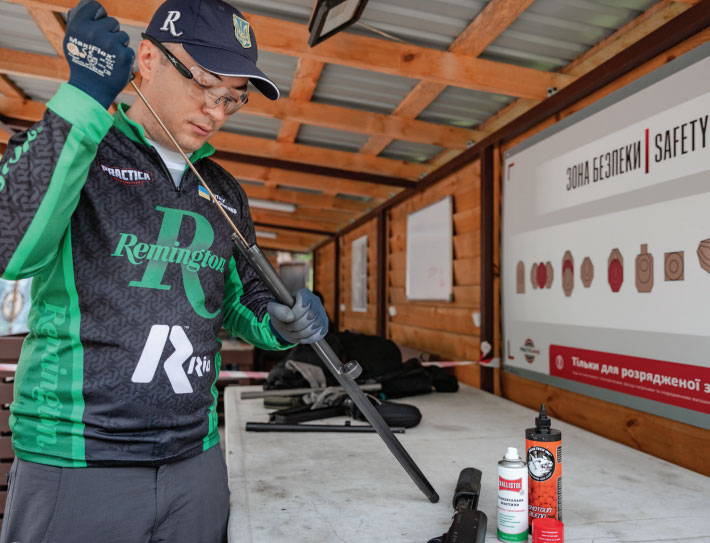
Tip: if you are cleaning a weapon with an optical or red dot sight mounted on it, be careful not to get cleaners and lubricants on the lenses of the devices.
The standard procedure for cleaning a shotgun after shooting is:
1. Make sure the gun is unloaded.
2. Put on goggles and gloves.
3. Disassemble the gun.
Related Post: Remington 870 Disassembly and Reassembly with Illustrations and Video
4. Apply cleaning solvent or universal cleaning lubricating oil inside the bore. If necessary, spread the cleaner over the entire surface of the bore with a nylon brush. Set the barrel aside for 10-15 minutes to allow the product to dissolve the carbon deposits.
5. In the meantime, work on the rest of the gun. Pay special attention to cleaning the gas chamber and piston on gas-operated semi-auto shotguns.
6. Pay attention to the tubular magazine of the shotgun. It can have much dirt in it, so it should also be cleaned and lubricated. To do this, spray a little oil inside the magazine tube, take a paper towel, roll a ball out of it and push it through the tube with a cleaning rod. You will be surprised by the amount of dirt found inside.
If you use a box magazine-fed shotgun, then it is also recommended to disassemble, clean and lubricate all magazines.
7. Wipe the inside of the receiver, cleaning out carbon deposits and possible gunpowder residue. Be careful not to cut your hands – there are sharp edges there.
8. When the residue in the bore dissolves a little, you can proceed to clean. The most effective tool is a copper or steel wire spiral bore brush. It is recommended to use it on some container that will catch splashes and drips of dirt, otherwise, they will fly in all directions when cleaning the barrel. Push the bore brush through the barrel in the direction from the breech to the muzzle exiting it, and then drag it in the opposite direction. Repeat this 5-10 times, then roll up a ball of paper towel and push it through the barrel to remove loose dirt.
9. Look through the barrel to the light to visually evaluate the results. Repeat the procedure described in the previous paragraph if necessary.
10. If your barrel has interchangeable chokes, then be sure to unscrew the installed choke, wipe it inside and out, and carefully clean the internal threads of the barrel from carbon deposits (do not be surprised – there will be a lot of them) after cleaning the bore. Lubricate the choke’s outer surface and the threading before installing it back. It is better to use a special choke lube, but regular gun oil is good too.
ATTENTION: do not clean the bore without the choke installed in the barrel! This may damage the threading.
11. Lubricate the barrel with a small amount of oil after the bore has been cleaned.
12. Wipe all parts of the gun with an oiled cloth so that a thin oil film remains on them. Don’t forget to wipe the follower and magazine spring.
13. Apply some oil to a cloth and wipe the outer surfaces.
14. Do not forget to wipe the cleaning rod from dirt, solvent residues and oil.
The gun cleaning procedure does not take much time usually. But a clean and lubricated gun will have a long and trouble-free operation.


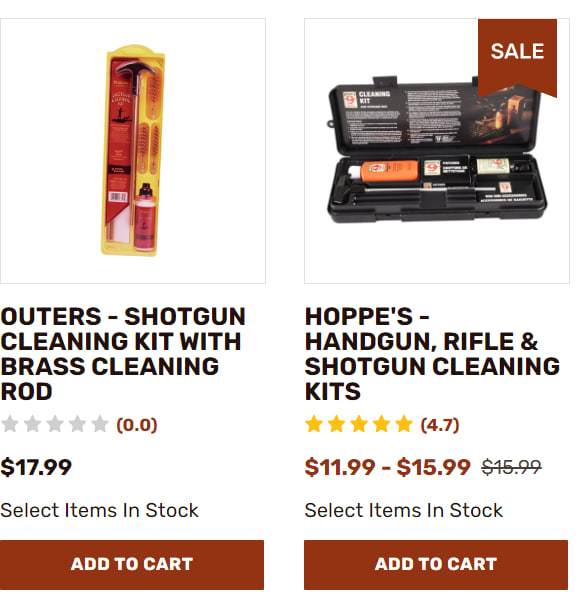
I couldn’t take this post seriously when I saw you using “frog lube”. Some of the worst stuff to use for cleaning guns! Gums up like crazy, and turns into a glue like substance over time.
Thought everyone knew that stuff “frog lube” was junk?
My experience is the same: “The use of thick pastes – namely, Froglube lubricant, which is advertised as natural – for some reason was unsuccessful on all semi-automatic weapons where I used it. After applying this lubricant, delays immediately began. Therefore, I recommend using traditional liquid gun oils.”